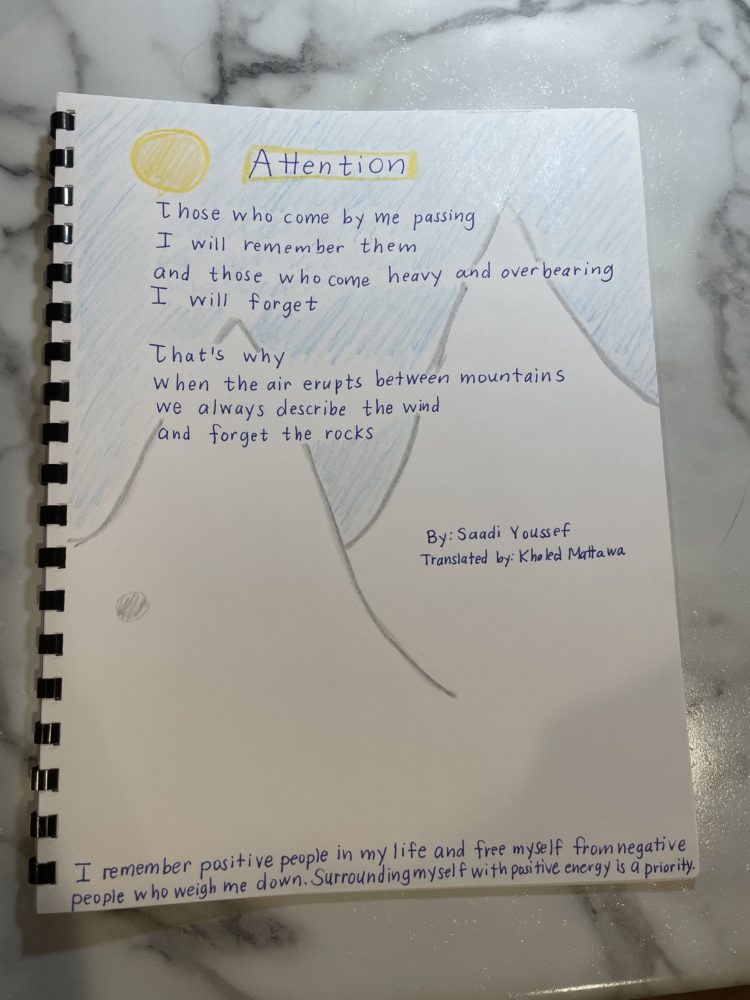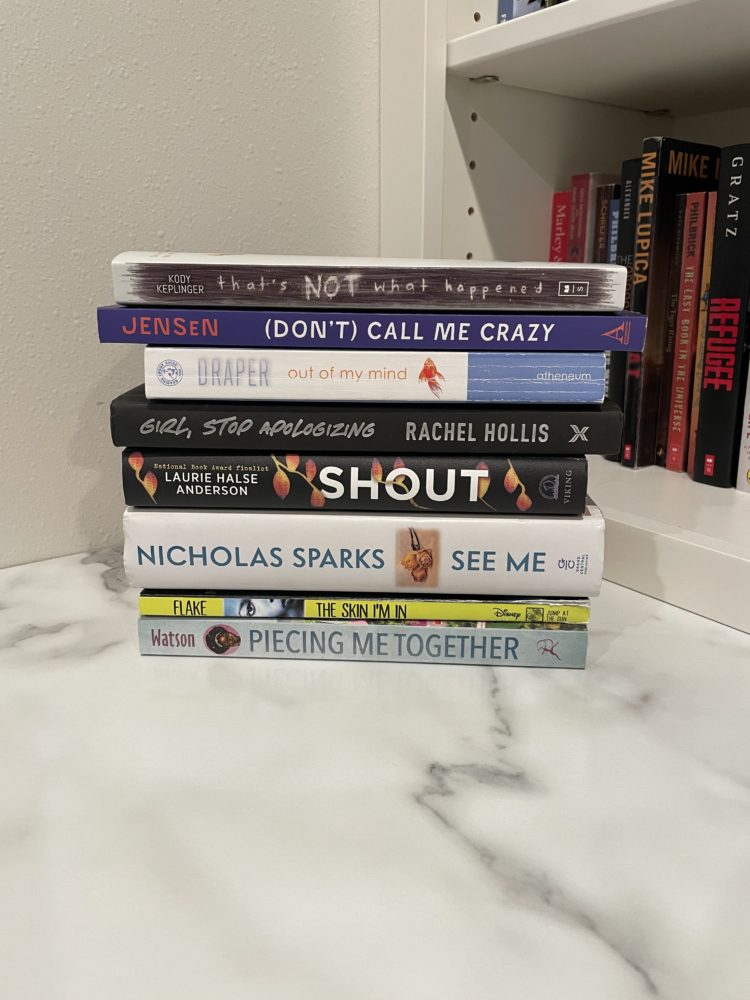Teaching poetry in middle school is a fun and engaging change of pace. We can get so caught up in our routines of teaching reading, writing, and grammar that it sometimes feels hard to “take a break” and do something else. Poetry in middle school can be a breakthrough for some students who don’t connect and engage with reading and writing. It’s always fun to see different students shine and feel excited while we’re doing Poetry Workshop. Poetry can be done 1-2 times/a month across the school year or taught as a unit. Read on for three strategies for teaching poetry in middle school.
Strategy One: Start Small (Read & Respond to Poetry)
When starting poetry with students in your classroom, starting small is key. We don’t want to turn them off to the genre of poetry on day one by asking them to write a poetry analysis about a poem that is confusing to them. Instead, have students start by reading as many poems as they can get their hands on. Gather poetry books from your classroom library and school library and post a list of links to poetry websites on your Google Classroom. Spend the first day of teaching poetry, if not longer, simply asking students to read poems.
Next, ask students to copy down poems they connect with and/or find enjoyable in a literacy notebook or type the poem into a document. This part is so important. I have students copy down poetry they connect to so they can see how the author created the poem. As they’re copying down the poem exactly as it appears, students have to think about what words the author did/didn’t capitalize, where the line breaks are, punctuation the poet used, etc.
As students copy down poems they connect to and enjoy, ask them to respond to each poem they copy down in some way. Don’t pressure students to write a multi-paragraph response that includes x, y, and z. Here are some prompts you could give students as they respond to the poems they copy down:
-Draw a picture around the poem to represent something about the poem.
-What stuck out to you about this poem?
-What did you find enjoyable about this poem?
-What did you connect to in this poem?

Strategy Two: Have Fun with Specialty Poems
Instead of diving in and asking students to write poetry of their own (this can definitely come later on), try out specialty poems that are a little less intimidating and whole lot of fun. I’ll explain my favorite specialty poems to try with middle school students.
Book Spine Poetry is where students arrange book covers and use the titles of books to create a sequence of words to make up a Book Spine Poem. If you are comfortable with students using books in your classroom library to do this, you can have students select the 5-7 books they’d like to use and have at it. Incorporate photography and have students take a picture of their book stack, insert the picture into a writing document and explain the meaning behind their book spine poem. Students could also write down the book titles in order on a sheet of paper.
Book Spine Poetry can also be done digitally by providing students with a list of titles and having them type the titles into a document that has several rows to represent book spines. Regardless of how you do Book Spine Poems, make sure students think about the meaning behind their poems and share their poems with other students.

Blackout Poetry is another fun way to have students explore poetry. My favorite way to do blackout poetry is to photocopy random pages from books in our classroom library so that students have the opportunity to have different pages than their classmates and have choice as to what pages they choose. In distance learning this year, I scanned pages from popular middle school books, uploaded those pages to Google Classroom, and had students do blackout poetry in reverse and digitally highlight the words/phrases from the page they wanted to use in their blackout poetry.

Strategy Three: Notice and Mimic Poet’s Techniques
I think we subconsciously do this as writers all the time. We read and soak in how writers structure sentences, infuse bold word choice, and so much more. We then mimic these techniques in our own writing, sometimes without even realizing that we’re drawing from what we experienced as readers. This is why I think most authors are also avid readers. They go hand-in-hand. During writing units, we use mentor texts to show students examples of writing within the genre that we’re teaching. Students naturally mimic what they see in the mentor text in their own writing. Poetry should be no different.
Start an anchor chart with students called “Poet Techniques We Notice” and add to it as you read poetry aloud to students and notice what poets do. You could even have students collect poet techniques they notice individually so that they have a list to draw from when it comes time to write their own poetry. Starting to write a poem from scratch can be pretty intimidating, but being able to reference a poet’s technique and think, “I could try that” makes the process more doable for many students.

If you’re interested in doing Poetry Workshop with your middle school ELA students, make sure you check out the full resource I’ve created to implement Poetry Workshop as a unit or sporadically across the year. The resource includes digital and editable student documents, along with detailed ideas and explanations for implementing Poetry Workshop gradually to students so that they develop a love and appreciation for poetry.
Finally, I want to share links to poems for middle school students. There are so many poems out there that I often find it difficult to sift through and find poems that middle school students will connect to and find approachable. Here they are:
- “I Carry Your Heart With Me” by E.E. Cummings
- “The Road Not Taken” by Robert Frost
- “Dreams” by Langston Hughes
- “A Jelly-Fish” by Marianne Moore
- “Diana of the Hunt” by Forceythe Wilson
- “The Rose that Grew from Concrete” by Tupac Shakur
- “My First Best Friend” by Jack Prelutsky
- “Still I Rise” by Maya Angelou
- “Mother Doesn’t Want a Dog” by Judith Viorst
- “A Dream Within a Dream” by Edgar Allan Poe
- “I am Offering This Poem” by Jimmy Santiago Baca
- “The Fish” by Elizabeth Bishop
- “We Real Cool” by Gwendolyn Brooks
- “This is Just to Say” by William Carlos Williams
- “The Hill We Climb” by Amanda Gorman
I’d love to hear how poetry goes for you and your students. If you have any other strategies for teaching poetry that have worked well, please drop them in the comments below.
Kasey





